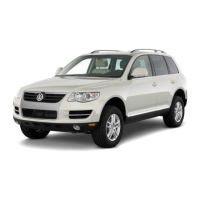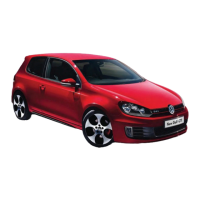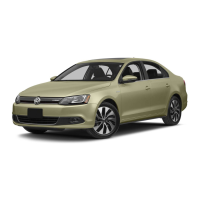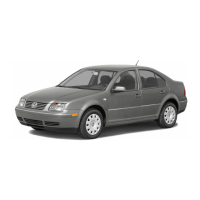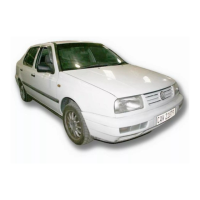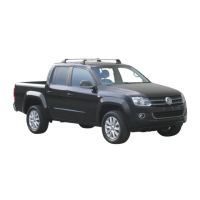P
r
o
t
e
c
t
e
d
b
y
c
o
p
y
r
i
g
h
t
.
C
o
p
y
i
n
g
f
o
r
p
r
i
v
a
t
e
o
r
c
o
m
m
e
r
c
i
a
l
p
u
r
p
o
s
e
s
,
i
n
p
a
r
t
o
r
i
n
w
h
o
l
e
,
i
s
n
o
t
p
e
r
m
i
t
t
e
d
u
n
l
e
s
s
a
u
t
h
o
r
i
s
e
d
b
y
V
o
l
k
s
w
a
g
e
n
A
G
.
V
o
l
k
s
w
a
g
e
n
A
G
d
o
e
s
n
o
t
g
u
a
r
a
n
t
e
e
o
r
a
c
c
e
p
t
a
n
y
l
i
a
b
i
l
i
t
y
w
i
t
h
r
e
s
p
e
c
t
t
o
t
h
e
c
o
r
r
e
c
t
n
e
s
s
o
f
i
n
f
o
r
m
a
t
i
o
n
i
n
t
h
i
s
d
o
c
u
m
e
n
t
.
C
o
p
y
r
i
g
h
t
b
y
V
o
l
k
s
w
a
g
e
n
A
G
.
Temperature in °C Pressure in bar (positive pres‐
sure) R134a
5 2.49
10 3.13
15 3.90
20 4.70
25 5.63
30 6.70
35 7.83
40 9.10
45 10.54
50 12.11
55 13.83
60 15.72
65 17.79
70 20.05
75 22.52
80 25.21
85 28.14
90 31.34
1.5 Refrigerant R134a
Air conditioners in vehicles use the evaporation and condensation
process. The system contains a liquid with a low boiling point,
called the refrigerant.
The refrigerant used is tetrafluoroethane R134a, which boils at
-26.5°C with vapour pressure of 1 bar.
1.5.1 Physical data of refrigerant R134a
Chemical formula CH2F–CF3 or CF3–CH2F
Chemical designation Tetrafluoroethane
Boiling point at 1 bar -26.5℃
Freezing point -101.6℃
Critical temperature 100.6℃
Critical pressure 40.56 bar (technical) pressure
equates to 39.5 bar (standard)
pressure
1.5.2 Critical point
Critical point (critical temperature and critical pressure) means the
point above which there is no longer a surface of separation be‐
tween liquid and gas.
Above its critical point, a substance is always gaseous.
At temperatures below the critical point, all types of refrigerant
contained within a pressure tank exhibit a liquid phase and a gas
phase, so that there is a gas cushion above the liquid.
As long as there is gas in the pressure vessel alongside the liquid,
the pressure depends directly on the ambient temperature
⇒ page 3 .
Amarok 2011 ➤ , Beetle 2012 ➤ , Bora 1999 ➤ , CC 2010 ➤ , CC 2012 ➤ , ...
Air conditioning system with refrigerant R134a - Edition 10.2014
4 Rep. gr.00 - Technical data

